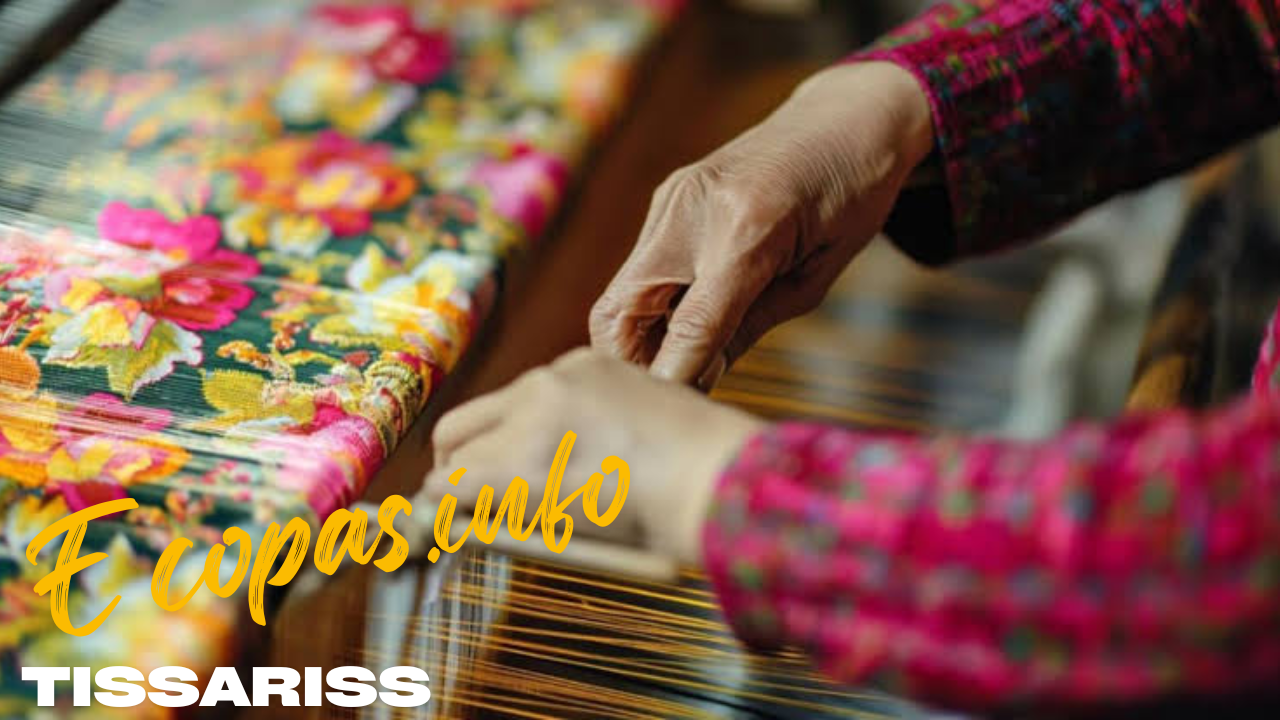Tissariss, a traditional weaving craft, stands as a testament to the cultural richness and artistry of its origin. For centuries, it has played a pivotal role in preserving cultural heritage, weaving stories into fabric and passing them down through generations. As a vibrant art form, it blends history, creativity, and identity, holding its place in both tradition and modernity. Weaving, in the Tissariss tradition, is not just a skill but a vital connection between past and present, offering a visual narrative of the people who created it.
Historical Background of Tissariss
Tissariss weaving traces its roots to a small region with a long-standing tradition of textile artistry. Thought to have originated in ancient times, the craft began as a domestic art, where women wove intricate textiles for their families and communities. Early Tissariss fabrics were used for practical needs—such as clothing and household textiles—but also held ceremonial importance. Whether woven for weddings, religious rituals, or community gatherings, these fabrics became sacred objects, embodying cultural pride.
Over time, Tissariss evolved from a local craft to a symbol of cultural identity that garnered global attention. What once began as a domestic necessity grew into a celebrated art form. The international market’s recognition of the craft led to greater visibility for local artisans, helping them connect with new audiences. Despite its modernization, the essence of Tissariss has remained, deeply rooted in the stories of its origins.
The Craftsmanship Behind Tissariss
The heart of Tissariss weaving lies in its craftsmanship. Artisans meticulously select materials, each chosen for its unique qualities. Cotton, silk, and wool are the main fibers used in creating these textiles. Cotton offers durability and comfort, while silk adds a luxurious texture and sheen. Wool, valued for its warmth, is often reserved for heavier fabrics.
Natural dyes play a crucial role in defining the color palette of Tissariss. Artisans extract these dyes from plants and minerals, which not only makes the process eco-friendly but also lends a richness and depth to the fabric. Indigo creates deep blues, madder root produces a vibrant red, and turmeric gives a bright yellow hue. The use of natural dyes connects the craft to the land, adding layers of cultural meaning to each piece.
Traditional handloom techniques are the cornerstone of the weaving process. The use of wooden looms, passed down through generations, allows artisans to create intricate designs by hand. Patterns are carefully planned, with each thread contributing to the final artwork. These techniques, though time-consuming, are vital to maintaining the authenticity of Tissariss. Each woven piece tells a story, and the process of weaving itself becomes a journey of cultural expression.
Cultural Symbolism and Meaning in Tissariss Designs
Tissariss textiles are rich in symbolism. The patterns woven into the fabric often hold deeper meanings, reflecting the cultural and spiritual beliefs of the community. Geometric shapes are a common motif, representing harmony, balance, and the cyclical nature of life. Floral patterns, on the other hand, signify growth, beauty, and fertility, while animal motifs represent strength, protection, or kinship with nature.
Colors also carry cultural weight in Tissariss weaving. Each hue is carefully chosen, often representing specific emotions or ideas. For example, red might symbolize passion or life, while white represents purity or peace. These colors are not only aesthetically pleasing but deeply connected to the cultural identity of the region.
Tissariss fabrics have long been used in important ceremonies and rituals. From weddings to religious festivals, these textiles are integral to cultural traditions. Their use in such events reflects their significance beyond mere functionality—they embody the values and beliefs of the community.
Tissariss in Contemporary Design
As global interest in traditional crafts has grown, Tissariss has found its way into contemporary design. The fusion of old and new creates opportunities for innovation while maintaining the craft’s authenticity. Designers have embraced Tissariss not only for its beauty but for its cultural depth, incorporating it into fashion and home décor.
In the world of fashion, Tissariss textiles have been reimagined for modern wardrobes. Designers collaborate with artisans to create pieces that blend traditional techniques with contemporary styles. These partnerships help revitalize the craft, bringing it into new markets while ensuring that the artisan’s role remains central. Similarly, Tissariss fabrics have become popular in interior design, adding a touch of cultural elegance to modern homes.
This blending of tradition and innovation is a key factor in the survival of Tissariss. As demand for unique, handcrafted products grows, artisans are finding ways to adapt without losing the essence of their craft.
Economic and Social Impact
Tissariss is more than just an art form—it is a lifeline for many artisans and their communities. The craft provides economic opportunities, allowing artisans to earn a living while preserving their cultural heritage. In many regions, weaving is a family tradition, passed down from one generation to the next. By continuing this practice, artisans not only keep their culture alive but also support their families financially.
The rise of sustainable and ethical fashion has also benefited Tissariss. As consumers become more conscious of the environmental and social impact of their purchases, they are turning to handmade, eco-friendly products. Tissariss, with its use of natural materials and traditional methods, fits perfectly within this movement. Consumers appreciate the craftsmanship and cultural significance of each piece, making it a popular choice in the slow fashion movement.
Fair trade initiatives have further helped to bring Tissariss to a global audience. These initiatives support artisans by ensuring fair wages and ethical working conditions. They also help promote the craft in international markets, creating opportunities for growth and sustainability.
Challenges and Future of Tissariss
Despite its growing popularity, Tissariss faces several challenges. One of the biggest hurdles is balancing authenticity with the demands of the modern market. While there is a desire to keep traditional techniques alive, there is also pressure to produce faster and cheaper products to meet global demand. This can lead to compromises in quality and authenticity, threatening the future of the craft.
Efforts are being made to preserve traditional techniques, with organizations and governments stepping in to support artisans. Workshops, training programs, and cultural festivals help to keep the craft alive, passing on knowledge to younger generations.
Innovation also plays a key role in the future of Tissariss. By embracing new materials, designs, and technologies, artisans can continue to grow their craft while staying true to its roots. The challenge lies in finding the right balance between tradition and innovation, ensuring that Tissariss remains relevant in an ever-changing world.
Conclusion
The art of Tissariss is more than a weaving technique—it is a cultural treasure that connects generations through its intricate designs and deep symbolism. From its humble beginnings to its place on the global stage, Tissariss has evolved while staying true to its origins. As artisans continue to weave their stories into the fabric, the craft’s legacy grows, preserving culture while adapting to modern trends. Protecting and promoting Tissariss is essential to keeping this rich cultural heritage alive for future generations.





